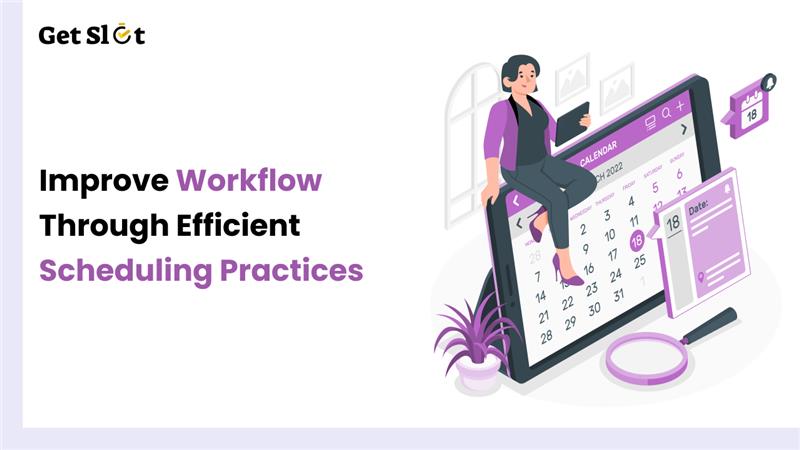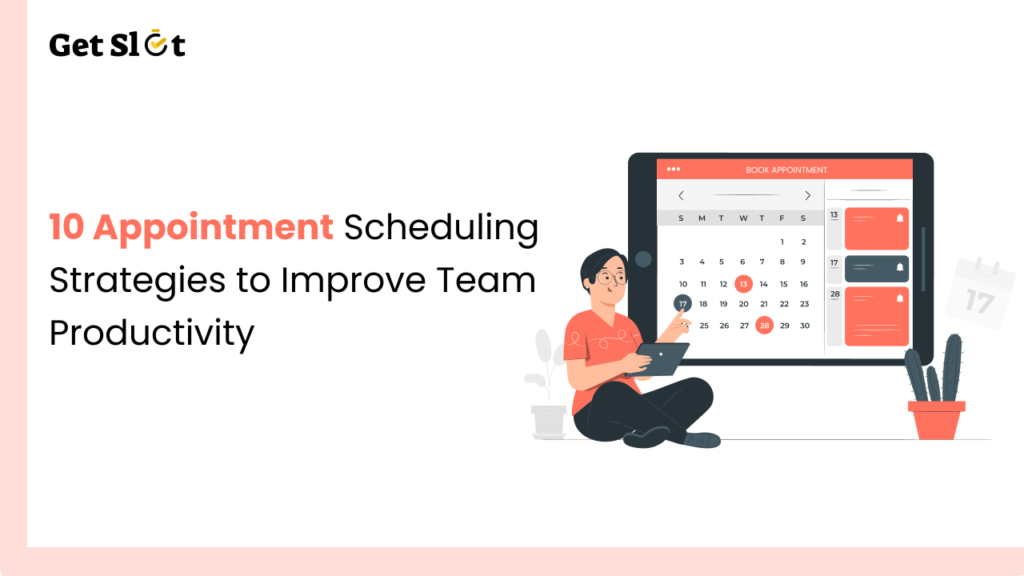Improve workflow through efficient scheduling practices
Time management is a must to run any business effectively. Whether it is a clinic working on specific therapies, a salon, a service center, or a consulting unit, and the way days are scheduled determines how smoothly the operation runs. Inefficient planning results in great confusion, delays, and wastages of time. Proper planning and efficient scheduling increase the productivity of the team, reduce mistakes, and enhance the overall customer experience. This blog elaborates on how working businesses can set their workflow through smart and effective scheduling. These are the easiest Efficient Scheduling Practice procedures to apply, yet they have a great bearing on your day-to-day operations. 1. Understand Your Team’s Daily Workflow Before improving the schedule, get to know how your team works daily. Write down the main tasks, their duration, and who does the job. Why it helps: Avoid overburdening team members Helps in accurately allocating time for the various services Creates realistic expectations regarding working days When practicing Efficient Scheduling Practice activities, you create a normal working routine for your team that supports smooth operations. 📱 Stay connected—follow us on Instagram, Facebook, Twitter, and more. 2. Use Digital Scheduling Tools Sometimes, paper schedules or manual schedules might confuse you; for that reason, scheduling tools may plan and manage work clearly and in real time. Benefits: Simple to update and make changes Shared across the whole team Less chance of double booking or an appointment being missed Should everyone were working smarter, it would be the digital way; these systems ensure that. 3. Set Time Blocks for Different Tasks Time blocking generally means breaking the day into chunks and assigning a task to each block: for instance, mornings devoted to client meetings, afternoons assigned for company-related work. Why does this improve the workflow? Prevents multitasking Encourages concentration on one set of activities Creates a predictable workday pattern When team members already know where to begin and end at what time, their efficiency will increase. 4. Avoid Overbooking If you try to cram too many tasks or appointments for just one day, it will eventually cause a lot of stress and might lead to subpar service. Ideally, your schedule should have enough time between appointments for accidental or optional delays. Best practices: Keep an appointment buffer Sort out realistic times based on past data. Respect for employees should include respecting their breaks Ensuring there is balance in the schedule lessens the chance of burnout and ensures quality work. 5. Allow Customers to Book Online Allowing consumers to arrange their dates and times helps your team save precious time while minimizing errors from scheduling. Advantages: Clients view available slots, then book one directly. Staff members focus on their service provision rather than taking calls. Less back-and-forth communication between client and provider. Online booking is a simple way to improve Efficient Scheduling Practice efficiency and customer convenience. 6. Send Automated Reminders Empty slots due to missed appointments are disruptive. Automated reminders decrease the number of absences and keep your days and nights filled with understanding good cases. How it helps: SMS or email reminders about 24-48 hours before the appointment; It includes booking time, date, and location; Clients confirm or reschedule. Such a simple step keeps systems organized and ensures people attend. 7. Assign Work Based on Skill and Availability Different people have different skills. Giving tasks to the right person would be done much faster and more accurately. Tips for effective scheduling: Use a scheduling tool that allows you to assign tasks Consider each staff member’s shift, role, and capacity Avoid last-minute changes that uproot planned work Smart assignment lessens delays and ensures proper task completion. More Updates for: Boost work output with smart time management tools 8. Monitor and Adjust the Schedule Regularly No schedule is perfect forever. Workload, staff availability, and changes in customer needs to keep occurring. Reviewing your schedule often guides you in making changes accordingly. What to look for: Gaps or overlaps during bookings Appointments that are missed frequently Delays or overtimes A few minor tweaks emerging from data do a lot to improve working workflow. 9. Manage Walk-Ins and Emergency Requests Some industries are forced to take up unplanned requests. A flexible schedule lets you handle these walk-ins without clashing with scheduled tasks. Solutions: Allowably keep a few open time slots throughout the day Create a simple queueing system Issue priority based on urgency Maintains order as well as catering to new or urgent customers. 10. Use Reports to Plan Ahead Reports provided by a digital scheduling tool will be able to confirm trends, busy times, and staff workload. Make use of this data in scheduling ahead. Benefits: Know which hours are busy and use the information to plan staff shifts Know the best services in the house Make informed decisions about staffing Data-driven planning reduces mistakes and prepares your business for growth. Conclusion Efficient scheduling is one of the most important steps you can take to improve your business workflow. By organizing time, assigning tasks wisely, and reducing manual work, you help your team work better and serve customers more effectively. Whether you manage a small team or a large organization, applying smart scheduling practices leads to fewer errors, better use of resources, and higher satisfaction for both staff and clients. With tools like GetSlot, businesses can take control of their schedules, automate routine tasks, and keep operations running smoothly. When your scheduling is efficient, everything else becomes easier, making it a key part of long-term success. FAQs Q1. What is the biggest benefit of efficient scheduling? Efficient scheduling saves time, reduces confusion, and allows your team to focus on their work, which improves overall productivity. Q2. How can I avoid overbooking staff? Use a scheduling tool that tracks staff availability in real time and prevents assigning overlapping tasks. Q3. Can small businesses benefit from scheduling tools? Yes. Even small teams benefit from better organization, time savings, and reduced manual work. Q4. How do I keep track of appointment changes? Use a digital




